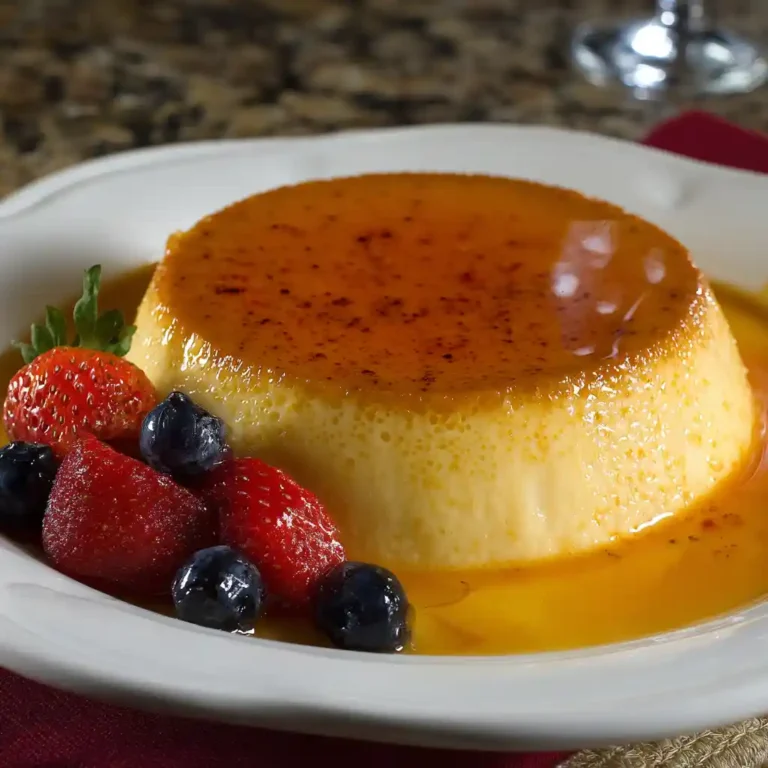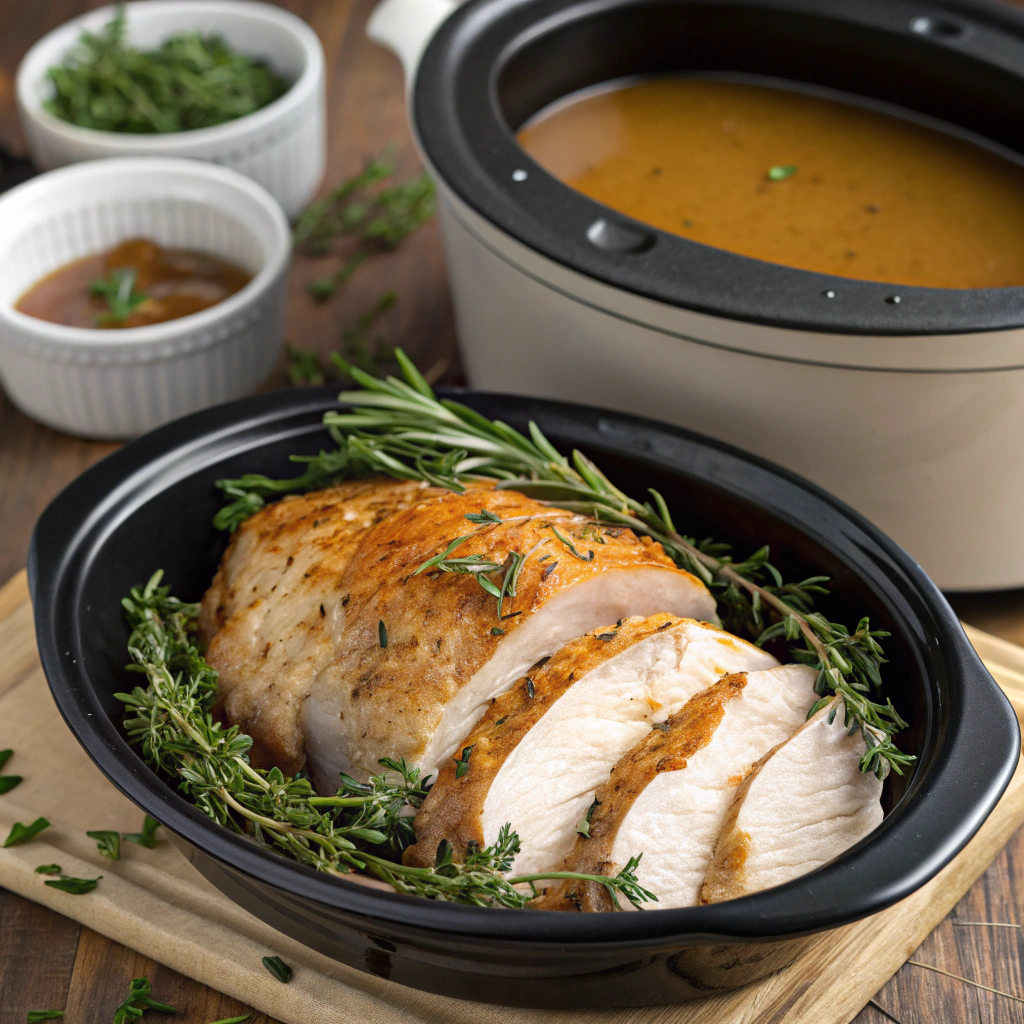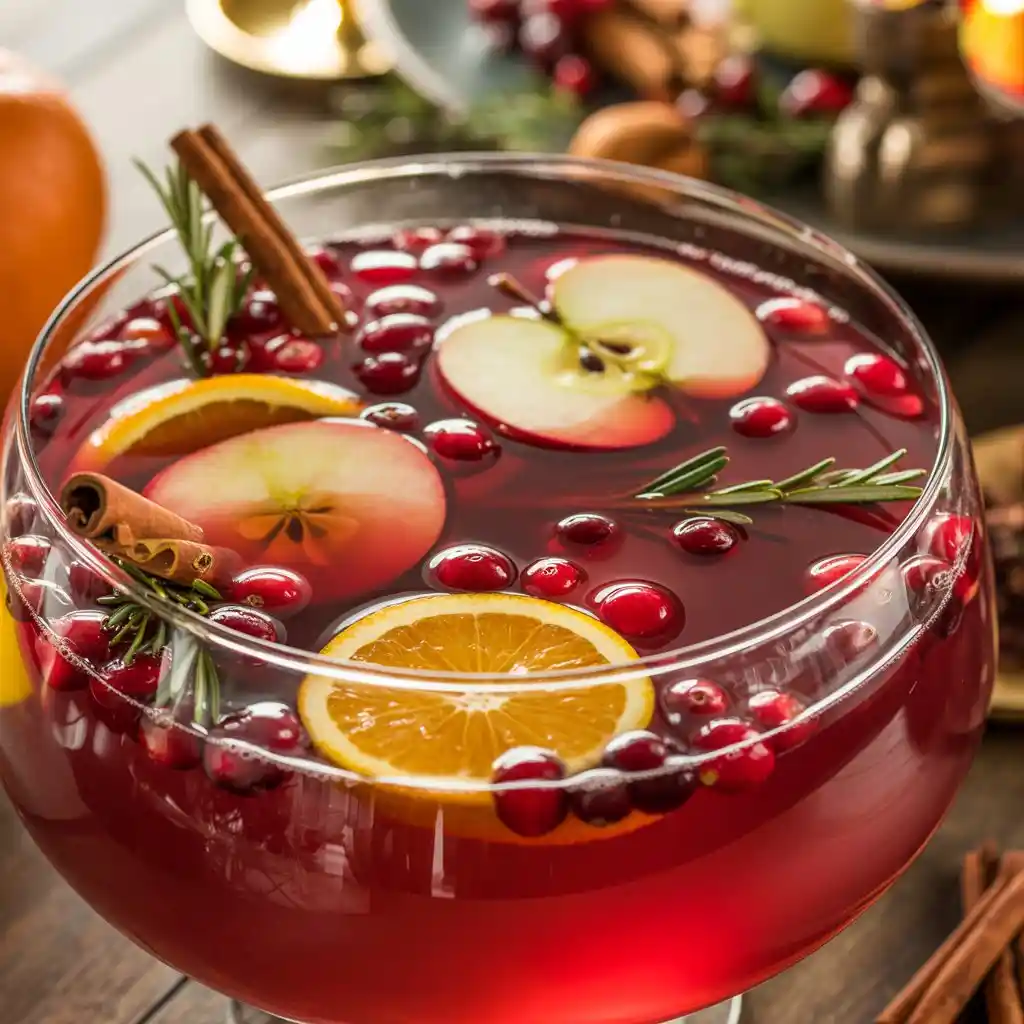Last Updated on August 10, 2025 by Recipes by carla
Imagine the sun setting over Havana, a warm breeze carrying the scent of sugar, cinnamon, and ripe guava through the air. Now picture that first bite—a flaky pastry oozing with sweet tropical fruit, or a spoonful of creamy flan so silky it practically melts before you can swallow. That’s the magic of Cuban desserts, and today, we’re bringing that magic straight to your kitchen.
Here at MishMashRecipes.com, we’re all about making cooking feel like an adventure—not a chore. I’m Sophy, the heart (and slightly messy apron) behind MishMash, and I’ll be your guide on this sugar-sprinkled journey through Cuba’s most beloved sweets. You don’t need a culinary degree or generations of secret recipes to enjoy these treats. All you need is a little curiosity, a pinch of courage, and maybe a whisk that’s seen better days.
From iconic flan Cubano to pastelitos de guayaba that taste like pure sunshine, this guide will walk you through the classics, the hidden gems, and even the best tips to make them at home—without stress and without fancy equipment. Whether you’re here as a first-time baker, a dessert devotee, or someone who just really, really loves guava, welcome.
So, grab your mixing bowl, warm up that oven, and let’s dive into a world where every bite feels like a tropical vacation.
JUMP TO
Introduction to Cuban Desserts
The Role of Desserts in Cuban Culture
Cuban desserts are more than just a sweet ending—they’re a story on a plate. In Cuba, dessert is often the part of the meal where families linger at the table, sipping strong coffee and swapping stories. The recipes are shaped by centuries of cultural blending—Spanish, African, and Caribbean influences coming together in the form of flans, pastries, and tropical fruit treats. Sugarcane, once one of Cuba’s biggest exports, naturally plays a starring role, along with local fruits like guava, coconut, and mango.
In a traditional Cuban home, dessert isn’t rushed. It’s savored. Whether you’re celebrating a big event or simply sharing a weekday dinner, there’s almost always something sweet to close the meal. And while bakeries and cafés offer plenty of options, many Cuban desserts are still lovingly made from scratch at home—just like grandma used to do.

Why Cuban Desserts Are Loved Worldwide
Cuban desserts have a widespread appeal that reaches far beyond their place of origin. Part of their charm lies in the balance—they’re rich, but never cloying; indulgent, but still approachable. They blend familiar comfort with exotic flair, making them a hit whether served at a casual family gathering or an elegant dinner party.
For example, pastelitos de guayaba—flaky pastries filled with guava paste—are as welcome at a Sunday brunch as they are at a holiday celebration. Flan Cubano, with its creamy custard and caramelized top, has crossed oceans and adapted in countless kitchens around the globe. Even if you can’t hop a flight to Havana, you can still enjoy a taste of Cuban sunshine right at home.
If desserts are your love language, you’ll want to check out other indulgent inspirations like our Italian Tiramisu or the surprisingly playful Fried Chicken Ice Cream.
Cuba’s Most Famous Dessert
Flan Cubano – The Iconic Cuban Flan
Ask any Cuban what their favorite dessert is, and there’s a good chance they’ll say flan. While many cultures have their own versions, Flan Cubano stands out for its silky-smooth texture and perfectly caramelized sugar top. This simple recipe uses eggs, milk, sugar, and a hint of vanilla to create a rich, luxurious dessert.
The secret? Patience. Cuban flan is baked low and slow, often in a water bath, to achieve that flawless custard without bubbles. Once cooled, it’s flipped out of its mold, letting the caramel cascade over the sides like golden syrup. Serve it chilled for the ultimate creamy bite.
Traditional Recipes and Modern Twists
The classic flan is unbeatable, but Cuban creativity knows no bounds. Home cooks often add a modern twist to flan, experimenting with infusions like coconut milk for a tropical taste, or coffee, rum, and guava for unique flavor profiles. Restaurants in Miami’s Little Havana often feature gourmet versions topped with whipped cream, berries, or chocolate drizzle.
If you’re looking for something similarly decadent yet easy to make, try our Boston Cream Cake Recipe—it’s not Cuban, but it shares that luscious, creamy indulgence that dessert lovers crave.
Desserts That Pair Perfectly with Cuban Meals
Sweet Endings for Classic Cuban Dinners
When you’ve just enjoyed a savory Cuban feast—maybe ropa vieja, picadillo, or a classic Cuban sandwich—you need a dessert that enhances the meal without stealing the spotlight. That’s where Cuban desserts shine. They’re designed to round out the dining experience with a perfect mix of sweetness, creaminess, and tropical flair.
Popular Cuban desserts like arroz con leche (creamy rice pudding) or flan Cubano are staples at family tables and restaurants alike. These treats not only satisfy a sweet tooth but also reflect Cuba’s history of blending Spanish, African, and Caribbean influences. Served with a cafecito, they turn an ordinary dinner into an experience.
If you’re looking for a fruit-forward pairing to balance a rich Cuban meal, try our Fruit Ice Cream—it’s not a traditional Cuban dessert, but the bright tropical flavors make it a natural fit.
Refreshing vs. Rich Desserts: What to Serve When
The beauty of Cuban desserts is that they fit every occasion. For a refreshing end to a meal on a hot day, consider lighter options such as cold coconut pudding or fresh papaya with syrup. For festive evenings, richer options like capuchinos (syrup-soaked sponge cakes) or decadent tres leches cake create a luxurious close to the meal.
To decide which dessert works best, think balance: a heavy main dish pairs beautifully with a lighter sweet, while a simple entrée leaves room for something rich and indulgent.
Traditional Cuban Pastries
Pastelitos de Guayaba – Guava Pastries
If there’s one pastry that defines traditional Cuban desserts, it’s pastelitos de guayaba. These flaky puff pastries, generously filled with guava paste—and often cream cheese—are a staple in Cuban bakeries and coffee shops. The combination of buttery layers and sweet, tangy fruit makes them irresistible.
Pastelitos are more than just a snack—they’re a taste of Cuban heritage. Even Cubans living abroad seek them out in local bakeries, especially in places like Miami’s Little Havana. And they’re easy enough to bake at home, making them a perfect weekend treat.
For a similar pastry indulgence from a different tradition, check out our Easy Heart Shaped Cake—it’s not part of Cuban desserts, but it captures that same balance of rich pastry and sweet filling.
Exploring Other Pastries Like Turrón and Capuchinos
While pastelitos steal the show, the world of authentic Cuban desserts includes other pastry gems. Turrón de maní (peanut nougat) is a crunchy, portable sweet perfect for gifting or snacking. Capuchinos, cone-shaped sponge cakes drenched in syrup, are reserved for special celebrations. Then there’s masa real, a layered guava shortbread that’s both delicate and deeply satisfying.
These pastries tell Cuba’s story through flavor, showcasing the creativity and resourcefulness of its people. Each bite carries a little piece of history—and a lot of sweetness.
Famous Cuban Sweet Dishes
Tres Leches Cake – Moist and Decadent
One of the most beloved Cuban desserts you’ll find at celebrations is the tres leches cake. This sponge cake is soaked in a mixture of three milks—evaporated milk, condensed milk, and heavy cream—creating a rich, moist texture that’s unlike anything else. It’s often topped with whipped cream and fresh fruit, adding a lightness that balances the sweetness.
Though tres leches cake has roots across Latin America, the Cuban version tends to be less dense, with a delicate crumb that absorbs the milk mixture perfectly. It’s a crowd-pleaser at weddings, birthdays, and holidays.
If you enjoy this kind of creamy decadence, you might also like our Boston Cream Cake Recipe, which delivers a similar rich and luscious bite.
Arroz con Leche – Cuban Rice Pudding
Another staple in the world of traditional Cuban desserts is arroz con leche, a creamy rice pudding flavored with cinnamon and sometimes lemon zest. This dessert is as comforting as it is simple, often made from ingredients you already have in your pantry.
Served warm in the winter or chilled in the summer, arroz con leche brings the taste of Cuban tradition to your table. Its origins trace back to Spanish colonial times, but over the centuries, Cubans have added their own tropical touches, like coconut milk or even guava syrup.
Cuba’s National Dish and Its Sweet Counterparts
Ropa Vieja – The Savory Star
When talking about Cuban cuisine, you can’t ignore ropa vieja—the national dish. This shredded beef stew is rich, savory, and deeply satisfying, often served with rice, beans, and plantains. But after such a flavorful main, you need something sweet to balance it out—and that’s where Cuban desserts truly shine.
Sweet Complements to the National Dish
For a hearty ropa vieja meal, many Cubans choose flan Cubano as the dessert. The rich, caramel-coated custard offers a pleasant contrast to the stew’s strong flavors. Others prefer pastelitos de guayaba for a fruity, flaky bite, or tres leches cake for a creamy finale.
If you want a dessert that complements a traditional Cuban main, try pairing ropa vieja with a light citrus sponge cake or a coconut pudding. The key is to choose something that refreshes the palate without overwhelming the senses.
For more indulgent inspiration beyond Cuban cooking, check out our Pistachio Cream Recipe—it’s not Cuban, but it’s rich, creamy, and makes a perfect after-dinner treat.
The Classic Cuban Platter
Embark on a vibrant, flavorful journey with a Classic Cuban Platter, which is more than just a meal—it’s an homage to the island’s culinary heritage. This dish celebrates a rich history, bold spices, and a unique fusion of Spanish, African, and Caribbean influences.
What’s on a Classic Cuban Menu
A typical Cuban platter is a feast for the senses, anchored by a few essential components. The star of the show is often Lechón Asado, a slow-roasted pork that’s marinated in a savory blend of garlic, sour orange, and oregano until it’s impossibly tender. Alongside the pork, you’ll find Arroz Congrí, a flavorful and fragrant rice and black bean dish cooked together to create a single, cohesive side. Yuca con Mojo, boiled cassava root topped with a zesty garlic and citrus sauce, adds a starchy, earthy counterpoint. Finally, crispy, fried Maduros (sweet plantains) provide a delightful sweetness, while Tostones (savory, twice-fried green plantains) offer a satisfying crunch.
Best Dessert Choices to Complete the Meal
A sweet treat is the perfect ending to any Cuban meal. The desserts are often simple yet decadent, reflecting the use of tropical fruits, milk, and sugar. Flan is a quintessential choice, a smooth, caramel-coated custard that provides a beautiful, creamy contrast to the rich flavors of the main course. Another popular option is Tres Leches Cake, a sponge cake soaked in three types of milk—evaporated, condensed, and heavy cream—resulting in an incredibly moist and sweet treat. For a lighter, fruitier option, many choose Guava and Cheese Pastries (Pastelitos de Guayaba y Queso), which combine the sweet, floral notes of guava with the tang of cream cheese in a flaky pastry shell.
Making Cuban Desserts at Home
Making authentic Cuban desserts at home is a rewarding experience, allowing you to recreate the sweet flavors of the island in your own kitchen. The key to success lies in understanding the core Cuban desserts and using the right ingredients and techniques.
Essential Ingredients for Authentic Flavors
To capture the true taste of Cuban desserts, you’ll need a few key ingredients. Condensed milk and evaporated milk are fundamental for creating creamy textures in desserts like flan and tres leches cake. Classic pastries often rely on the delicious combination of guava paste and cream cheese. Other staples include sugar, eggs, and vanilla extract. Some recipes may also call for the addition of tropical fruits, such as mango or coconut, and warm spices like cinnamon.
Tips for Perfect Texture and Taste
Achieving the perfect texture and taste for your Cuban desserts requires attention to detail. Achieve a perfectly smooth flan by straining the custard mixture, which eliminates any bubbles or lumps before it goes into the oven. When making tres leches cake, be generous with the milk soak to ensure a moist, rich texture. For pastries, use cold butter and a light touch when handling the dough to get a flaky result. Don’t be afraid to experiment with the amount of sweetness to suit your personal taste, as Cuban desserts can be quite sweet.
Where to Find the Best Cuban Desserts
If you’re not in the mood to bake, you can still enjoy delicious Cuban desserts by visiting a local bakery or café.
Top Cuban Bakeries and Cafés in the USA
Many U.S. cities with large Cuban populations are home to exceptional bakeries and cafés that specialize in Cuban desserts. Miami’s Little Havana is a prime example, with legendary spots like Versailles and Azucar Ice Cream Company serving up everything from classic flan to unique ice cream flavors. In Tampa, look for bakeries in Ybor City. Beyond those areas, cities such as New York, Chicago, and Los Angeles are also home to fantastic Cuban dessert options.
Cuban Dessert Festivals and Food Events
For a true celebration of Cuban desserts, keep an eye out for local Cuban food festivals and events. These gatherings often feature a wide variety of sweet treats from different vendors, giving you the chance to sample a range of Cuban desserts in one place. These events are also a great way to learn more about Cuban culture and cuisine from the people who know it best.
Frequently Asked Questions About Cuban Cuisine
What is Cuba’s most famous dessert?
While it’s difficult to pinpoint just one, flan is arguably Cuba’s most famous dessert. This creamy, caramel-topped custard is a beloved staple on almost every Cuban menu and is a favorite at family gatherings and celebrations. Its rich flavor and smooth texture make it a timeless classic that perfectly encapsulates the sweet side of Cuban cuisine.
What dessert goes with Cuban food?
The ideal dessert to pair with Cuban food is one that provides a sweet and often creamy counterpoint to the savory, bold flavors of the main course. Flan, tres leches cake, and rice pudding (arroz con leche) are all excellent choices. For a lighter finish, a pastry with guava and cream cheese or simply some sliced tropical fruit like mango or papaya can also be a perfect fit.
What is a traditional Cuban pastry?
The most iconic traditional Cuban pastry is the pastelito de guayaba y queso, or guava and cheese pastry. This flaky, buttery pastry is filled with a sweet guava paste and a slice of cream cheese, creating a delightful balance of sweet, tangy, and savory flavors. You’ll find these pastries in every Cuban bakery, often enjoyed with a strong cup of Cuban coffee.
What is the most famous Cuban dish?
The most famous Cuban dish is widely considered to be Ropa Vieja. The name, which translates to “old clothes,” refers to the shredded flank steak simmered in a savory tomato-based sauce with bell peppers, onions, and garlic. It’s a flavorful and tender dish that is often served with a side of white rice and black beans.
What is Cuba’s national dish?
Cuba’s national dish is also Ropa Vieja. Its deep-rooted history and widespread popularity make it the perfect representation of the nation’s culinary identity. While other dishes like lechón asado (roasted pork) are also very popular, Ropa Vieja holds the official title due to its iconic status and cultural significance.
What’s on a classic Cuban platter?
A classic Cuban platter is a hearty and delicious feast. The centerpiece is often Lechón Asado (roasted pork) or Ropa Vieja. This is typically accompanied by essential side dishes like Arroz Congrí (rice and black beans cooked together), fried Maduros (sweet plantains), and sometimes Yuca con Mojo (cassava with garlic sauce). It’s a complete meal that showcases the rich and varied flavors of Cuban cooking.






1 thought on “How to Make Authentic Cuban Desserts at Home – Easy & Tasty”